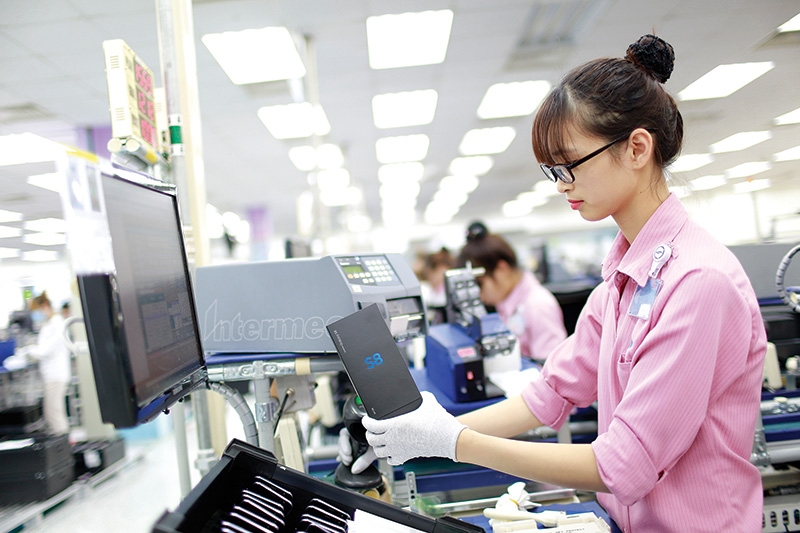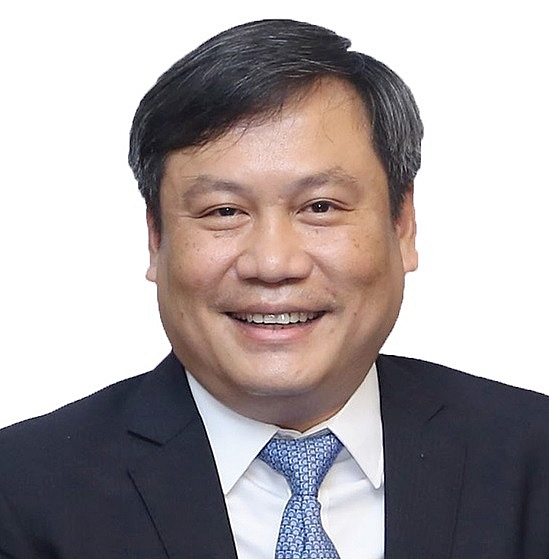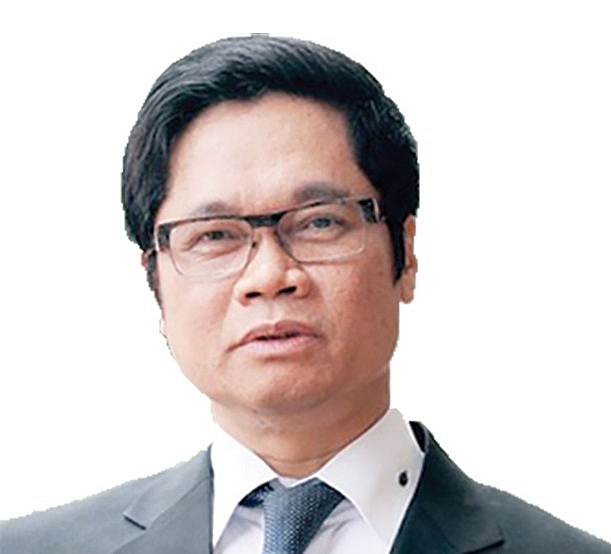 |
|
The new FDI strategy will look towards attaining more interest in high-tech contributions into domestic sectors
|
Nearly one month after the Politburo’s issuance of Resolution No.50-NQ-TW, giving directions to complete the legal framework on foreign direct investment (FDI) attraction in the new development era, the government e-portal last week held a discussion on how Vietnam can deal with any challenges and make preparations to possibly welcome new-generation FDI in the months to come.
While highlighting the contributions of FDI in socio-economic development over the past 30 years and shortcomings related to environmental pollution and low spillover effects, Deputy Minister of Planning and Investment Vu Dai Thang said that the country’s new strategy is being built towards increasing responsibility of foreign-invested enterprises (FIEs) and further diversifying investment co-operation.
“Reform of legal policy and development of infrastructure and human resources are the three key factors for Vietnam to efficiently welcome new-generation and high-quality FDI. In the resolution, legal reform is the premise in the path,” Thang said.
Thus far, the Ministry of Planning and Investment (MPI) has institutionalised directions in the resolution in its law making, including the amendments of Law on Investment 2014 and the Law on Enterprises 2014 as well as the drafting of the Law on Public-Private Partnership (PPP). For example, in the amendment of the Law on Investment 2014, the list of business lines with market access conditions for foreign investors is supplemented, aiming to simplify the procedures, and increase transparency and feasibility in the application of the country’s commitments to an open market in alignment with new-generation free trade agreements and international treaties on investment.
Nevertheless, problems are identified in the way that Vietnam needs to solve in order to create a big push for new-generation FDI attraction. According to Vu Tien Loc, chairman of the Vietnam Chamber of Commerce and Industry, though low added value, transfer pricing, trade frauds, and loose linkage between FIEs and domestic businesses remain the shortcomings in FDI attraction, an incomplete legal policy and the low capacity of local businesses are partly the reasons for these.
“Around 85 per cent of FIEs said that they find difficulties in recruiting enough qualified manpower for business activities. Moreover, we cannot attract more quality FDI without good preparations for infrastructure and legal policies,” Loc said. “The FDI trend now focuses on innovations and digital transformation. Thus, we need a breakthrough in legal policy to create a premise for this.”
Le Van Thanh, Deputy Chairman of Haiphong People’s Committee said, “In addition to this, the incentive policy should also be considered carefully. The country should not pay too much attention to this in new-generation FDI attraction.”
The northern port city of Haiphong, one of the most attractive investment destinations in Vietnam, has taken the sense of initiative in building a list of projects to attract quality FDI.
According to Deputy Minister Thang, Resolution 50 is expected to solve these problems. It also gives solutions to completion of the legal policy, the linkage between FIEs and domestic ones, and technology transfer, while supporting Vietnamese enterprises to increase their capacity, thus further improving the business climate and national competitiveness towards reaching the average indicators of the ASEAN-4 (Indonesia, Malaysia, Philippines, and Thailand) group by 2021, and the ASEAN-3 (Singapore, Malaysia, and Thailand) group by 2030.
The country’s FDI attraction orientations and investment incentives will focus on output quality and contributions to the domestic sectors. These include the value chain, added value, application, and transfer of high-technology, as well as research and development and innovation, rather than the previous focus on location, sectors, and investment scale.
As shown in the MPI’s statistics, Vietnam attracted $22.63 billion worth of newly-registered, expanded FDI and stake acquisitions in the first eight months of 2019, equal to 92.9 per cent of the same period last year, focusing on processing and manufacturing, real estate, and retail.
|
Vu Dai Thang - Deputy Minister of Planning and Investment
FDI is an essential part of the Vietnamese economy and equal to other economic sectors like private and state-owned ones. Thereby, Resolution 50 has already outlined specific targets of FDI in the time coming regarding registered capital, disbursed capital, as well as the linkage between foreign-invested enterprises (FIEs) and domestic counterparts. So, FDI contributing to the total development investment capital of the economy should be maintained at 20-25 per cent to make guarantees for social security and economic growth. At present, the disbursed FDI sum has made up 50-60 per cent of the total registered FDI. That means the remaining 40-50 per cent has yet to be deployed in Vietnam. In the future, we should be cautious with ‘fake’ projects, which are registered with much investment but perform poorly with slow disbursement. Therefore, local authorities granting investment certificates should monitor business operations of FIEs to prevent negative environmental impacts, and pricing transfer transactions, which contain the risks related to the national security. Vu Tien Loc - Chairman, Vietnam Chamber of Commerce and Industry
Vietnam has been among the successful FDI attractors in the world. However, there is an enormous quantity of FDI capital in Vietnam that has yet to bring equal efficiency. Chances are being missed when it comes to transfer of technology and co-operation between FIEs and domestic counterparts. If we are not selective in attracting FDI, the economy will become a jostle between foreign and domestic businesses. FDI currently accounts for 50 per cent of the processing and manufacturing sector and 70 per cent of export in Vietnam. However, in the past, domestic enterprises used to hold an upper hand in these fields. Joint ventures in which foreign investors hook up with Vietnamese investors only stand at 20 per cent. There are still a large number of foreign-invested projects, including ones from developed countries, with low technologies which creates low added value. We need more thorough and drastic solutions to cope with those issues. Resolution 50, which underpins the careful evaluation process of foreign-invested projects, is crucial to orient within the Vietnamese legal framework, directing the new wave of FDI in Vietnam towards a higher quality. Hannu Hyttinen - Managing director Nefab Vietnam
Manufacturing has been an attractive industry among foreign investors in Vietnam for years. Japanese, South Korean, and others have been here for a long time, and now a lot of Western companies have come too. In the new development period, manufacturing still remains important in the country’s FDI picture. I like to see that the Vietnamese government is taking close steps now to attract foreign investment. Our company is operating in five countries, with a presence in Vietnam for four years. Currently, we have a small manufacturing in Vietnam, focusing on packaging solution for our hi-tech customers in different industries such as ABB, General Electric, Schneider Electric, among others. As we are growing in the country, we are thinking about a new plant in the southern region of the country to meet growing demands. With the new incentives, the strategy will help Vietnam attract more foreign investment, including part of our customers. VIR |
Thuy Huong
 With the Politburo’s new orientation in the policies on foreign investment attraction, government agencies and localities are hoping to stave off potential issues in order to take the appropriate actions to add to its attraction.
With the Politburo’s new orientation in the policies on foreign investment attraction, government agencies and localities are hoping to stave off potential issues in order to take the appropriate actions to add to its attraction.

